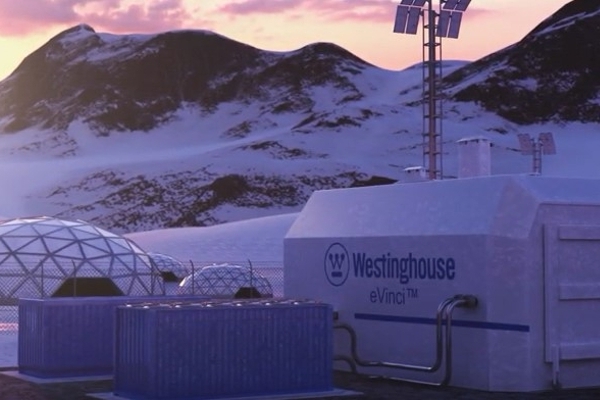
Are Small Modular Nuclear Reactors in Saskatchewan's Future?
Often, the best way to approach a policy challenge, especially one as fraught as climate change, is to start with a question. Or, in this case, three questions. It tends to focus the mind.
By Margot Hurlbert, Professor and Canada Research Chair in Climate Change, Energy and Sustainability Policy, Johnson Shoyama Graduate School of Public Policy (JSGS); Dale Eisler, JSGS Senior Policy FellowOften, the best way to approach a policy challenge, especially one as fraught as climate change, is to start with a question. Or, in this case, three questions. It tends to focus the mind.
First, why is electrical power production such an important part of climate policy for Saskatchewan? Second, what do people in Saskatchewan think about the options and the challenges facing Saskatchewan as it plans for the key milestones of 2030 and 2050? And third, what is public opinion around the proposal to reconsider nuclear power generation in the form of small modular reactors (SMRs)?
The importance of electrical power generation to meeting greenhouse gas (GHG) mitigation objectives has two components. The first is simply one of scale. Many of our everyday activities, such as driving vehicles or heating our homes will have to transition away from the use of GHG intensive fuels such as oil and gas towards cleaner alternatives such as electricity. Second is that the production of that electricity itself must come from clean non-emitting sources, such as nuclear, hydro, wind or solar, or else we will be no further forward in meeting GHG reduction goals.
In some provinces, for example, British Columbia (hydro) and Ontario (nuclear and hydro), power generation has traditionally come from clean energy sources, so that an increase in electricity demand will not mean a corresponding increase in GHG emissions. In Saskatchewan, by contrast, the mix of fuels used to generate electrical power has relied heavily on coal and gas. What that means is to meet our milestones of reaching the objective that by 2030 fully 50 per cent of SaskPower’s electrical generation comes from non-emitting renewable sources will require a careful and planned transition away from these sources to cleaner alternatives.
Both the government of Saskatchewan and SaskPower are perfectly aware of the scale of the challenge and have committed to meeting it. But to successfully achieve it requires that the options to get there are carefully considered based on facts. Some of the key decisions to reach the 2030 target have yet to be made. This policy brief considers the options, outlines the background to these decisions and reports on a recent survey of Saskatchewan residents that included questions about their own opinions on the power generation mix.
The federal government’s commitments call for a 30 per cent reduction of GHG emissions from 2005 levels by 2030 and “net zero emissions” by 2050. Net zero does not mean no emissions; it means that, by 2050, any remaining GHG emissions will have to be balanced by corresponding offsets, including land use changes or technologies that store carbon rather than release it into the atmosphere.
While these dates may seem a long way off, especially 2050, the planning, financing, regulatory approval and construction of energy infrastructure can be a long and arduous process that takes many years to achieve. There has been considerable public attention given to the Saskatchewan government’s public disagreement with the federal government over some of the means that the latter would like to see employed to reach these targets. Most notably is pricing carbon by means of a tax, which has led to a dispute now before the Supreme Court of Canada. But in spite of the disagreement over the constitutional validity of the carbon tax, the Saskatchewan government, like other provinces, has broadly accepted the federal climate change goals, which are based on the federal-provincial consensus expressed in the 2016 Vancouver Declaration.
The Saskatchewan focus, set out in the government’s Prairie Resilience Plan, places more emphasis on the use of technology to reduce emissions and on land use changes that capture the remainder. As far as electricity production is concerned, the government of Saskatchewan has encouraged SaskPower to exceed the 2030 targets, with the corporation committed to increasing its renewable power generation capacity to at least 50 per cent of its total power generation by that date. This is an example of a technology-driven approach to GHG mitigation involving increased wind, solar and hydro power generation and the developing awareness of biofuel and geothermal applications.
Figure 1: Saskatchewan's Power Mix
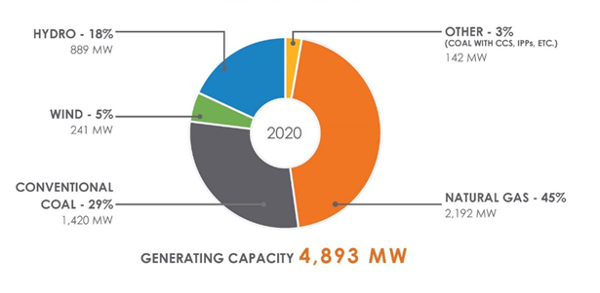
In detail, the plan is to add more than 1,800 MW of wind generation and 60 MW of ground-mounted solar photovoltaic generation to achieve at least 30 per cent wind, 15 per cent hydro, and 5 per cent solar, biomass and geothermal. But the plan, which also involved new natural gas builds, is changing. In June 2019 the federal government introduced regulations imposing restrictions on new natural gas power generation, leading Saskatchewan to reassess its future generation sources. SaskPower is now looking more seriously at wind and solar combined with battery storage, Carbon Capture and Sequestration (CCS), importing power from Alberta, Manitoba and the United States.
Achieving net zero emissions by 2050 in Saskatchewan’s electricity sector will require decarbonization of the remaining 50 per cent of SaskPower’s power production sources, either through more renewables, retrofitting and building new natural gas generation with CCS, importing hydro electricity from Manitoba, or employing nuclear power. Each one of these technologies has advantages and disadvantages. There is strong likelihood SaskPower will need to balance these off by continuing to employ a variety of different clean-energy sources. Recently, the government signalled its interest in pursuing nuclear power generation technology, specifically the new generation of small modular reactors (SMRs) currently under development and regulatory review.
The SMR Option
For decades, the issue of the mining and use of Saskatchewan’s rich uranium deposits has been the subject of public debate. Following extensive public hearings, the Cluff Lake Board of Inquiry in 1976 recommended that Saskatchewan expand development of uranium production, but restrict the province’s role only to the mining of uranium, and not its processing or the development of nuclear power.
While successive Saskatchewan governments have long been interested in converting Saskatchewan’s extensive high-quality uranium resources into power production, two factors have inhibited any move towards nuclear power production. One is the cost and feasibility of contemporary reactors. The other has been the sharply divided public opinion on nuclear power that became apparent during the public inquiry into expansion of uranium mining.
Other reviews concluded that large nuclear reactors, such as those in Ontario and New Brunswick generating between 600-1400 MW of electricity, would be both too expensive and concentrate too much power production in a single generator, raising adequate risk management issues. Most recently in 2008, the Wall government established and tasked a Uranium Development Partnership to explore opportunities for Saskatchewan to develop its uranium industry through the entire uranium value chain (UDP 2009). The report was followed by a more substantial public engagement (Perrins 2009) and a Legislative Committee that also conducted public consultations (SCCCA 2010). In these hearings a large nuclear plant was rejected, but not small nuclear generation (SaskPower 2013; Government of Saskatchewan 2009).
Small modular reactors have the potential to address many of these cost and safety concerns. They generate much less power from a single reactor (generally up to 300 MWe) and could supply power to homes and offices, heat for industrial processes and district heating for domestic use, and energy to produce clean fuels such as battery charging or hydrogen for transport. Reactors this size already drive marine vessels (submarines, aircraft carriers and icebreakers) with a 60-year record operating in hundreds of moving vessels that spend long periods of time in remote places. Moreover, demonstration and research units, with extremely low power, are safe, easy to regulate and secure, have operated at Canadian universities, including the University of Saskatchewan and research institutes around the world (Canada SMR Roadmap n.d.). Modular construction of power plants with completed or nearly completed units delivered to site might not only succeed in keeping construction costs down that result from large nuclear reactors, but also provide a role for smaller provinces in component construction or assembly.
Given those factors and the need to meet climate change targets, it did not come as a complete surprise to industry observers when, in November 2019, Premier Scott Moe together with Ontario and New Brunswick Premiers signed a memorandum of understanding to collaborate on modular reactors in order to mitigate climate change. Moe specifically mentioned Saskatchewan being well positioned to support more nuclear power given its large reserves of high-grade uranium ore (Canadian Press 2019). In June 2020, the Saskatchewan government took another step along this pathway, creating a Secretariat in the Ministry of the Environment to review industrial or community and non-electricity aspects of SMRs, along with planning of policies and programs (Ellis 2020). The signals from the government are strong. The question is what do Saskatchewan residents think of the potential for nuclear energy in Saskatchewan? And, equally significant, what do they think of nuclear in the broader context of power production sources and climate change mitigation in the future? In other words, has opinion about nuclear energy production in Saskatchewan shifted as the need to meet climate change goals has grown?
Saskatchewan Public Opinion
In a telephone survey of 1,014 people in Saskatchewan between November 12, 2019 to January 15, 2020, participants were given a list of choices for the generation of power in Saskatchewan and asked to rank them in terms of preference.1 Ranked from highest to lowest support the results were: solar (86.4%), hydro (84.8%), natural gas (80.6%), wind (79.8%), geothermal (73.1%), small modular reactors (49.5%), purchasing power from Manitoba Hydro (47.8%), biomass (42.2%), and coal with CCS (31.9%). Among the concerns expressed were that imports from Manitoba Hydro would mean the loss of Saskatchewan energy jobs and self sufficiency. Concerns surrounding SMRs related to risk and safety, the management of nuclear waste, lack of knowledge and the belief they were hypothetical and years from development. Concerns were expressed about each of the other supply sources. They included: hydro—both the lack of water and the impact on the environment; solar—the emissions to make the panels, supply chain materials, lack of reliability (especially in winter); wind—killing and impacting birds and bats, supply chain concerns, noise pollution, unreliability, ruining the landscape; geothermal—unreliability, costly, inefficient (consuming energy to pump water).
When participants were asked to choose one power source that would do the best job in providing Saskatchewan with safe, reliable, and sustainable electricity at the lowest possible cost, the choices from highest to lowest support were: natural gas, solar, small modular reactors, wind, hydro, coal with carbon capture and storage, Manitoba Hydro imports, geothermal, and biomass. A relatively small number of respondents either refused to answer the question or had no opinion.
Perhaps most interesting, given the intensity of some previous debates about the merits of nuclear power, the opinion of participants was not polarized in the sense of being either strongly opposed or strongly supportive of SMRs. Instead, opinion was somewhat fragmented, skewed in favour of support, but with a large group indicating that they were neither particularly opposed nor supportive. Of those expressing a strong opinion, 16.6 per cent strongly supported the building of SMR facilities, while 14.3 per cent strongly opposed.
However, while there is evidence of public willingness to consider SMRs, the survey also reveals greater support exists for wind, hydro, solar and geothermal. Support for natural gas in today’s regulatory environment is certainly warranted, but it is unclear whether respondents really understand that, in a net zero future, natural gas will only be built together with CCS, of which they remain suspicious.
1 The survey was funded by the CANDU Owners Group Ltd. - COG R&D, Strategic R&D Program, Work Package No. 73700. The project team included Drs. Jeremy Rayner and Margot Hurlbert, Research Facilitators Anne Ballantyne, Bethany Penn, Research Assistants, Daz Landrey Parker, Larissa Shasko, and Michaela Neetz.
Figure 2: Survey results on best power systems at the lowest cost in Saskatchewan
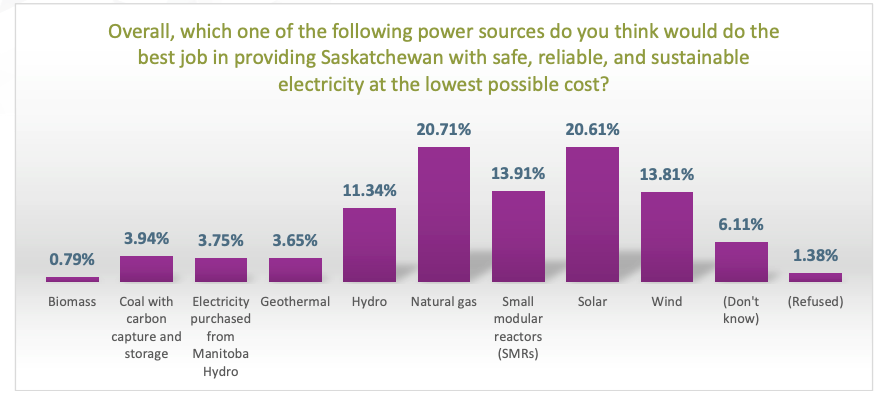
Figure 3: Survey results on public support for building a small modular reactor in Saskatchewan
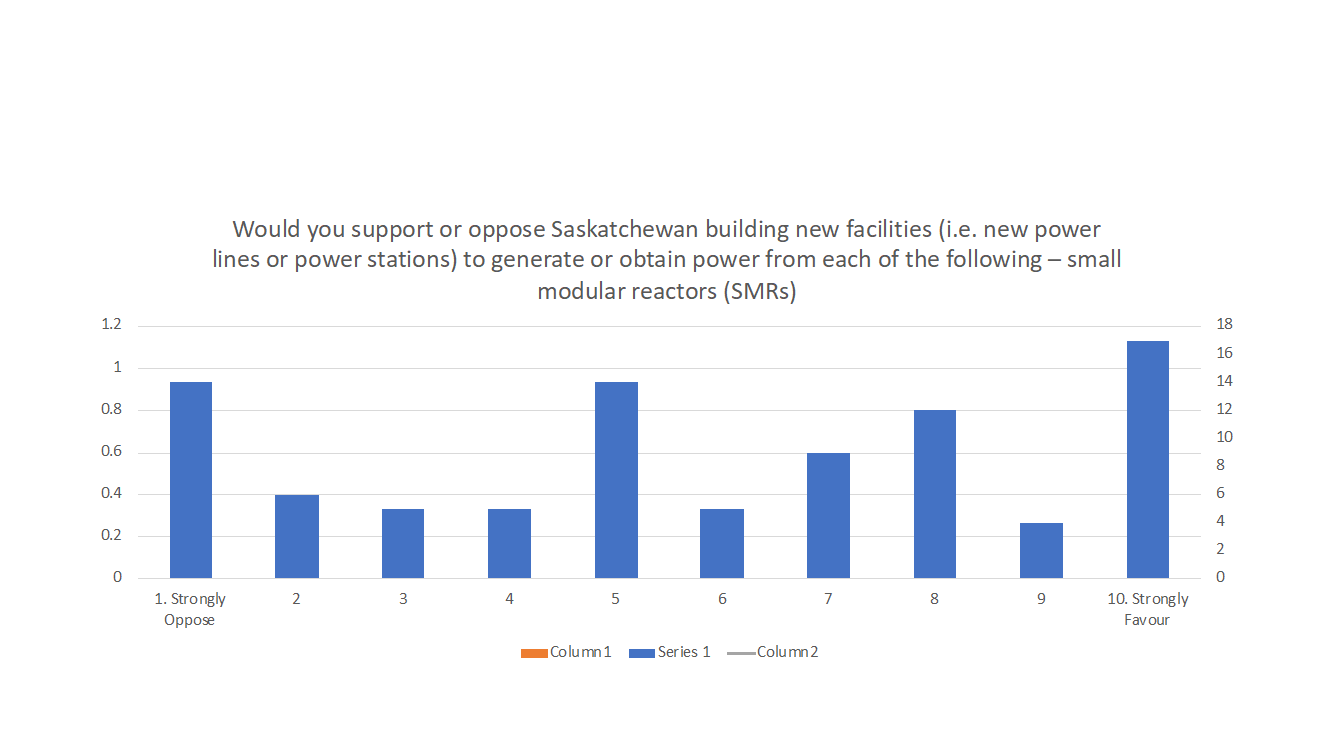
Figure 4: Survey results regarding respondents’ thoughts on primary source of electricity in Saskatchewan 10 years from now
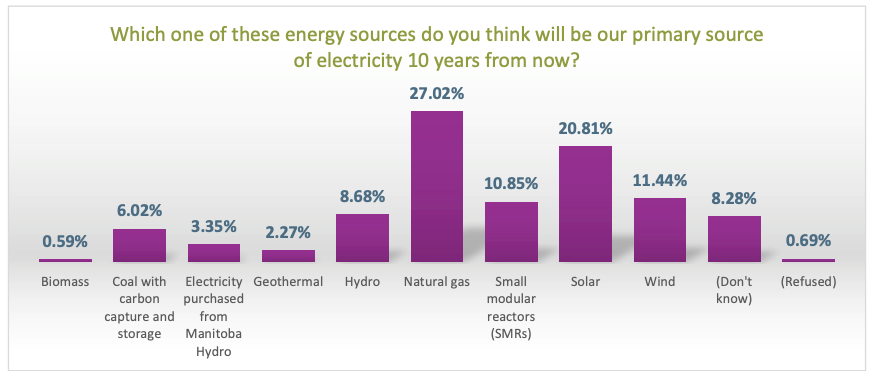
Participants were also asked if they supported or opposed Saskatchewan building new facilities to generate power from the listed sources. Support for new facilities was ranked from highest to lowest as: solar (82.3%), wind (75.5%), hydro (73.2%), natural gas (68.0%), geothermal (65.6%), small modular reactors (47.1%), Manitoba Hydro imports (39.0%), biomass (35.1%) and coal (25.6%) with CCS. The relatively low support for CCS is surprising given Saskatchewan’s globally recognized reputation surrounding the Boundary Dam CCS generating station, and the growing international consensus that CCS will be an important tool in reaching global climate targets. To achieve Paris commitments the IEA states , “renewables will not be enough on their own” (Chestney 2020) and solar, wind, low-carbon hydrogen, batteries and carbon capture and storage (CCUS) should be a part of governments’ plans for both stimulating clean energy transitions and stimulating economies (Birol 2020; Chestney 2020).
As shown above, participants chose what they believed would be our primary source of electricity 10 years from now. First was natural gas, followed by solar, wind, small modular reactors, and hydro. ‘don’t know’, coal with CCS, Manitoba Hydro imports and geothermal and indicated their awareness of SaskPower’s goal to achieve 50% renewable capacity by 2030. It’s important to note that respondents were expressing their opinions in the absence of other factors, such as the relative costs of the various options. In the past, less expensive sources of power, such as coal or natural gas, have influenced opinion as they are seen as less expensive and more readily available.
Recommendations
The fragmentation of opinion around SMRs, and the significant group who are apparently undecided, suggests that the public is open to consideration of small modular nuclear reactors as part of a portfolio of measures to meet climate change goals. But it also points to the continuing need for a public dialogue on whether to include SMRs in a net zero Saskatchewan future, and if so, how. Questions received from participants also confirm a continued need for education and awareness building around the benefits and challenges around such alternatives as SMRs, CCS, wind, and biomass. Support for natural gas generation is apparently the main alternative option to the continuing expansion of renewables, but is combined with strong opposition to CCS. The goals of the dialogue should include the development of greater awareness of the challenges of getting to net zero and the relationships and trade offs between the different options. Also important is pursuing longer term opportunities past 2030 surrounding innovation and economic development, including fuel enrichment, waste management, manufacturing/fabricating components along supply chains, and value-added processing.
ISSN 2369-0224 (Print) ISSN 2369-0232 (Online)
References
Birol, F. 2020. Coronavirus: Economic stimulus plans open a door for clean energy. Energypost.eu March 17, 2020 at: https://www.google.com/url?sa=t&rct=j&q=&esrc=s&source=web&cd=&ved=2ahUKEwiJ_ZHltbHqAhU8lnIEHTdHCSoQFjABegQIBxAB&url=https%3A%2F%2Fenergypost.eu%2Fcoronavirus-economic-stimulus-plans-open-a-door-for-clean-energy%2F&usg=AOvVaw3ovzikWWDbC4KxRZPCQtAz
Boyd, B., 2015. Standing Committee on Crown and Central Agencies: Hansard Verbatim Report. Legislative Assembly of Saskatchewan. Hansard Verbatim Report No. 27– June 18 2013. pp. 7756.
Canada SMR Roadmap. Available at: www.smrroadmap.ca
Canadian. Press. 2019. Ford, Moe and Higgs to announce deal on development of small nuclear reactors. The Canadian Press.
Chestney, N. 2020. Huge acceleration of clean energy innovation needed to meet net zero target: IEA Reuters. London. Available at: https://www.reuters.com/article/us-iea-cleanenergy/huge-acceleration-of-clean-energy-innovation-needed-to-meet-net-zero-target-iea-idUSKBN2430FJ
Ellis, B. 2020. Sask. Nuclear office to oversee development of small reactors. CTDV News. Available at:
ECCC (Environment and Climate Change Canada) 2020. Canadian Environmental Sustainability Indicators: Progress towards Canada's greenhouse gas emissions reduction target. Consulted on July 18, 2020. Available at: www.canada.ca/en/environment-climate-change/services/environmental-indicators/progress- towards-canada-greenhouse-gas-emissions-reduction-target.html.
Government of Canada. 2016. Pan-Canadian Framework on Clean Growth and Climate Change. Canada’ s Plan to Address Climate Change and Grow the economy. Available at: En4-294-2016-eng.pdf (PDF, 2.97 MB).
Government of Saskatchewan 2009. The Government’s Strategic Direction on Uranium Development, Government of Saskatchewan, Regina.
IPCC, 2019: Summary for Policymakers. In: IPCC Special Report on the Ocean and Cryosphere in a Changing Climate [H.- O. Pörtner, D.C. Roberts, V. Masson-Delmotte, P. Zhai, M. Tignor, E. Poloczanska, K. Mintenbeck, M. Nicolai, A. Okem, J. Petzold, B. Rama, N. Weyer (eds.)]. In press.
Perrins, D. 2009. “Future of uranium public consultation process”, Regina, Saskatchewan, available at: www.er.gov.sk.ca/uranium-development
Reduction of Carbon Dioxide Emissions from Coal-fired Generation of Electricity regulations (2012)
SaskPower 2013. “Our power future: generation options being considered, nuclear as a generation option”, available at: www.saskpower.com/our-power-future/generation- options-being -considered/nuclear-as-a-gemeration-option/
SCCCA - Standing Committee on Crown and Central Agencies 2010. Ninth Report: Inquiry into Saskatchewan’s Energy Needs, Final Report, Legislative Assembly of Saskatchewan, Committees Branch, Regina, April 5.
TEFPP (Trottier Energy Futures Project Partners) 2016. Canada’s Challenge & Opportunity. Transformations for Major Reductions in GHG Emissions. Trottier Family Foundation, The Canadian Academy of Engineering, David Suzuki Foundation.
UDP 2009. Capturing the Full Potential of the Uranium Value Chain in Saskatchewan, Uranium Development Partnership, University of Saskatchewan, Saskatoon, March 31.
Vallencourt, K., Ogilvie, K., Sigvaldason, O. 2018. Minimum Cost Strategies for GHG Mitigation for Ontario to 2030 and to 2050.Environmental Commissioner of Ontario. August 2018
Margot Hurlbert

Dale Eisler
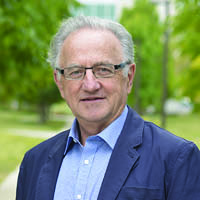
Prior to joining the JSGS, Dale Eisler spent 16 years with the Government of Canada in a series of senior positions, including as Assistant Deputy Minister Natural Resources Canada; Consul General for Canada in Denver, Colorado; Assistant Secretary to Cabinet at the Privy Council Office in Ottawa; and, Assistant Deputy Minister with the Department of Finance. In 2013, he received the Government of Canada’s Joan Atkinson Award for Public Service Excellence. Prior to joining the federal government, Dale spent 25 years as a journalist. He holds a degree in political science from the University of Saskatchewan, Regina Campus and an MA in political studies from Vermont College. He also studied as a Southam Fellow at the University of Toronto, and is the author of three books, including Anton, a historical fiction novel that has been turned into a feature film.

